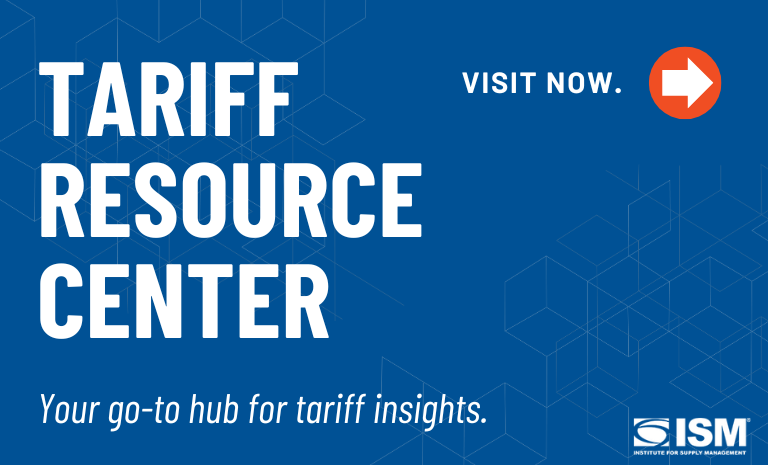Report On Business® Roundup: June Hospital PMI®

In June, the Hospital ISM® Report On Business® achieved a rarity, with a significant dip in employment pulling the composite PMI® down to 49 percent, into contraction territory for just the fifth time in seven years of data collection.
However, if there’s an occasion in which the release of the Hospital PMI® was secondary — or at least made more sobering, given the weak number — it was on Tuesday. That was affirmed last week, when President Donald Trump signed a sweeping federal budget and policy bill that will have major implications on the provision of health care in the U.S.
While much of the US$1.1 trillion in health-care spending cuts over the next 10 years and policy changes in the new law will not take effect until after the 2026 midterm elections, hospitals are already scrambling to contain the fallout of policymakers “looking for fraud and waste, looking to use a chainsaw and not a scalpel,” Nancy LeMaster, MBA, Chair of the Institute for Supply Management® Hospital Business Survey Committee, told a conference call of reporters on Tuesday.
The ISM Hospital PMI fell -3.0 pts to 49.0 in June 2025, signaling contraction in hospital activity for the first time in 21 months and marking only the fifth sub-50 reading in over seven years. pic.twitter.com/AShPbk4eW6
— MTS Insights (@MTSInsights) July 8, 2025
Among the health-care implications, the bill slashes Medicaid spending, tightens work requirements and curtails provider taxes that are especially vital to rural hospitals, and states are scrambling to fill the void.
Analysts predict that up to 12 million Medicaid recipients will lose coverage, and those getting coverage through the Affordable Care Act (ACA) would have their premiums spike if subsidies expire. The ACA subsidies end on January 1, and the majority Republican Party in Washington, D.C., has shown no urgency to extend them.
“I don’t think we’re going to see a clear turning point where the reductions will kick in,” LeMaster said, “but hospitals are already trying to model and do the math and understand the implications of lower (Medicaid) reimbursement and unintended consequences.”
The bill also cuts $230 billion from the Supplemental Nutrition Assistance Program (SNAP) — 42.1 million Americans receive monthly benefits, according to the U.S. Department of Agriculture — over the next decade.
“With nutrition, food and other safety net services, studies show that they are social determinants that impact health, and when you take those away, you get more chronic conditions and more people in the emergency room,” LeMaster said. “There are a lot of dynamics that are interconnected, and many people don’t get that.”
She added, “If Medicaid recipients have to reapply or prove they are working every six months, what’s the burden on hospitals — and on the taxpayers — to process that paperwork? Is it really going to be worth it in the end?”
While the health-care industry braces for future impacts, the Hospital PMI® numbers for June revealed significant business and supply chain ramifications related to current policy from the Trump administration.
The Prices and Prices: Supplies indexes both increased 1 percentage point to remain comfortably above 60 percent, and survey respondents indicated that their facilities or systems were getting tariff-related cost hikes or surcharges. The Business Activity Index remained in expansion but indicated slower growth, a potential harbinger heading into the typically slower months of July and August.
The health care peak season has shifted in recent years — from the summer, when children are out of school and adults generally have more elective-procedure flexibility, to the winter, as consumers rush to beat the new year’s insurance-deductible resets. However, LeMaster said there are no indications of a significant or lengthy drop in patient volumes.
Hospital #ISMPMI survey respondents: “Our facility is not hiring new staff if we can backfill roles with current employees.” Also, “A few manufacturers have lower fill rates, and some of our products are taking longer to be delivered.” https://t.co/LqjVmVTd9D #economy #healthcare
— Institute for Supply Management (@ism) July 8, 2025
A more pressing concern is the Employment Index, where an 8-percentage point decrease in June dragged it — and the PMI® — into contraction. Continuing sluggishness in employment would likely strain patient backlogs, and the Backlog of Orders Index also contracted in June, with a 5.5-percentage point loss.
“If patient volumes pick up, hospitals will need the capacity,” LeMaster said. “Usually, employment pressure is on the nonclinical staff, but they are just as critical in keeping a hospital running. Housekeepers, supply technicians, food service, billing and finance people play an important part, and it’s always hard to find the balance to ensure everything runs smoothly.”
Immigrants make up a significant share of the health-care workforce. While some hospitals have been on alert for raids by Immigration and Customs Enforcement (ICE) agents, there was no indication in the June data and comments that immigrant labor was impacted.
In case you missed the Report On Business® Roundup on the release of the June Manufacturing PMI®, you can read it here. The Roundup on the release of the Services PMI® can be read here. For the most up-to-date content on the three indexes in the ISM® Report On Business® family, use #ISMPMI on X, formerly known as Twitter.

